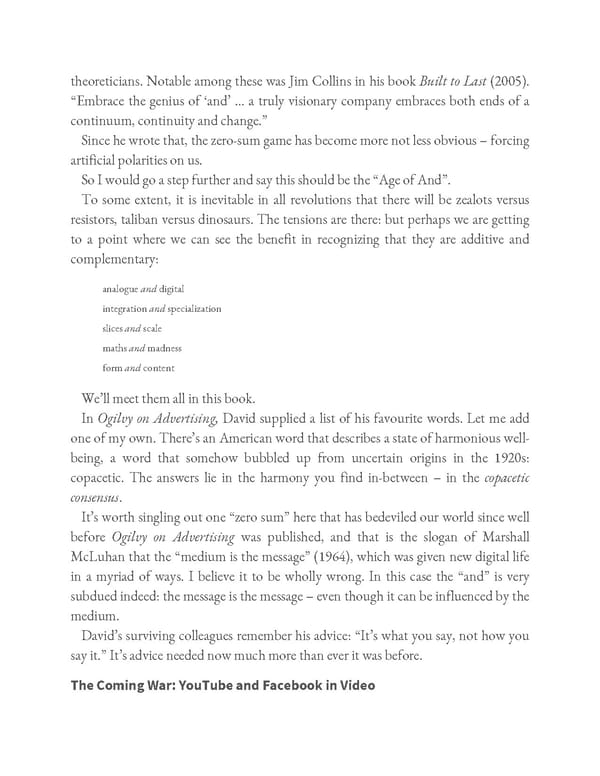theoreticians. Notable among these was Jim Collins in his book Built to Last (2005). “Embrace the genius of ‘and’ … a truly visionary company embraces both ends of a continuum, continuity and change.” Since he wrote that, the zero-sum game has become more not less obvious – forcing artificial polarities on us. So I would go a step further and say this should be the “Age of And”. To some extent, it is inevitable in all revolutions that there will be zealots versus resistors, taliban versus dinosaurs. The tensions are there: but perhaps we are getting to a point where we can see the benefit in recognizing that they are additive and complementary: analogue and digital integration and specialization slices and scale maths and madness form and content We’ll meet them all in this book. In Ogilvy on Advertising, David supplied a list of his favourite words. Let me add one of my own. There’s an American word that describes a state of harmonious well- being, a word that somehow bubbled up from uncertain origins in the 1920s: copacetic. The answers lie in the harmony you find in-between – in the copacetic consensus. It’s worth singling out one “zero sum” here that has bedeviled our world since well before Ogilvy on Advertising was published, and that is the slogan of Marshall McLuhan that the “medium is the message” (1964), which was given new digital life in a myriad of ways. I believe it to be wholly wrong. In this case the “and” is very subdued indeed: the message is the message – even though it can be influenced by the medium. David’s surviving colleagues remember his advice: “It’s what you say, not how you say it.” It’s advice needed now much more than ever it was before. The Coming War: YouTube and Facebook in Video
 Ogilvy on Advertising in the Digital Age Page 76 Page 78
Ogilvy on Advertising in the Digital Age Page 76 Page 78